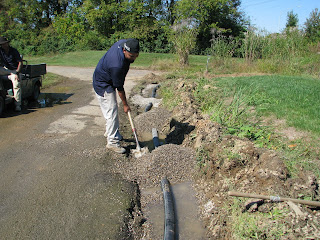On course etiquette: It’s everyone's responsibility
Presented by the Golf Course Superintendents Association of America
A famous college basketball coach once said that recruiting was like shaving -- miss just one day and you look bad. It could be said that golf course management personnel, especially superintendents, feel the same way about golfer etiquette on the course.
Golf course etiquette is an all-encompassing term that refers to demeanor, adherence to course maintenance rules, and dress, among other issues. However, most associate golf course etiquette to the concept of ball mark repair and divot replacement. Take a moment and consider what a course would look like if patrons were excused from replacing divots or fixing ball marks for just one day. A well-managed facility would look like a battlefield.
Golf course personnel are unanimous in stating that, as a whole, golfers still do not do an adequate job in repairing their ball marks and divots. Despite the presence of posters, notes in newsletters and announcements in meetings to serve as reminders, most facility managers believe the message can never be repeated too much.
This becomes an even bigger issue as the game expands to include more juniors and those who have recently picked up the sport. Instructors and experienced golfers should be diligent in teaching the how and why of golf course etiquette. Failing to teach golfers the proper techniques now creates future problems.
The basis for ball mark repair and divot replacement is for competitive and agronomic reasons. Balls that land in unrepaired divots place a golfer at a disadvantage, just as having to putt over a ball mark. By leaving turf damaged (unrepaired), it becomes susceptible to disease and/or infestation of weeds, resulting in a lower quality of playing surface. This necessitates the need for attention by golf course superintendents and their staffs, thereby taking them away from more pressing duties. As a general rule, a ball mark repaired within 10 minutes will heal with a smooth surface within two to three days. An unrepaired ball mark may take as long as three weeks to heal, but the result will be an uneven surface.
Because grass varieties differ from course to course, and from fairways to the rough, the best rule to follow in replacing divots is to check with the golf course superintendent for the particular policy. As a general rule, replace any divot on the course unless there is a sand or sand/seed mixture provided in a container on the golf car. Typically, the divot is replaced on any course with bentgrass or bluegrass fairways. If you are playing on a course with bentgrass fairways and bluegrass rough, you must pay particular attention to the materials in the container. If just sand is provided, then fill the divot hole and tamp down the sand with your foot. If a sand/bentgrass seed mixture is provided, divots in the rough would not be replaced so as to not contaminate the bluegrass with bentgrass seed. In bermuda grass fairways, generally sand is just used.
In replacing a divot, the policy is to replace the divot so the grass can send down new roots. If so, replace the turf in the same direction it came out, and tap down firmly so the mower won't pull it back out. If you are walking and no sand is provided, smooth the divot hole with your feet, gently pulling the sides of the divot hole to the center.
For more information regarding golf course maintenance and etiquette, contact your local superintendent or the Golf Course Superintendents Association of America at 800-472-7878 or
www.gcsaa.org.









































